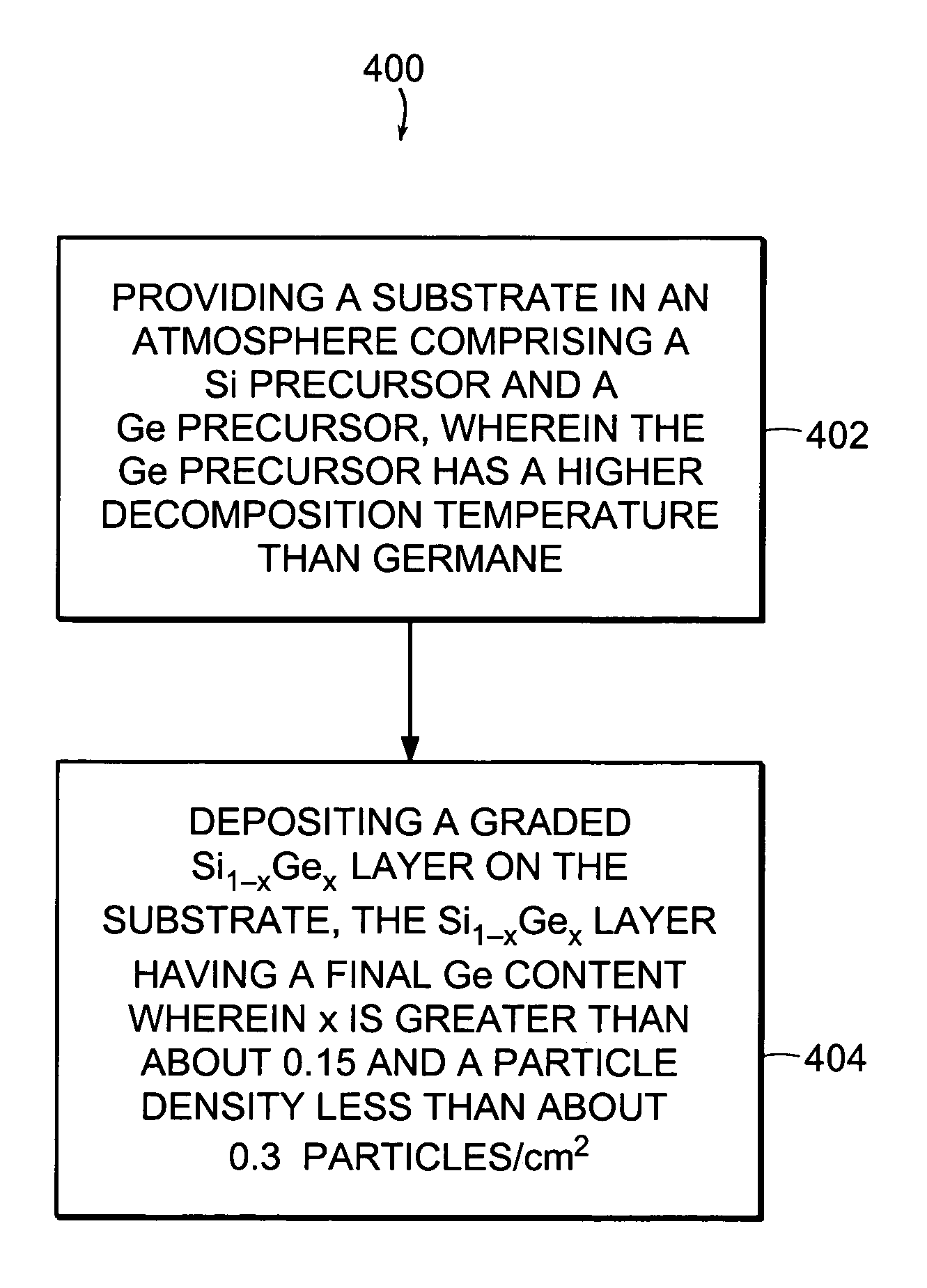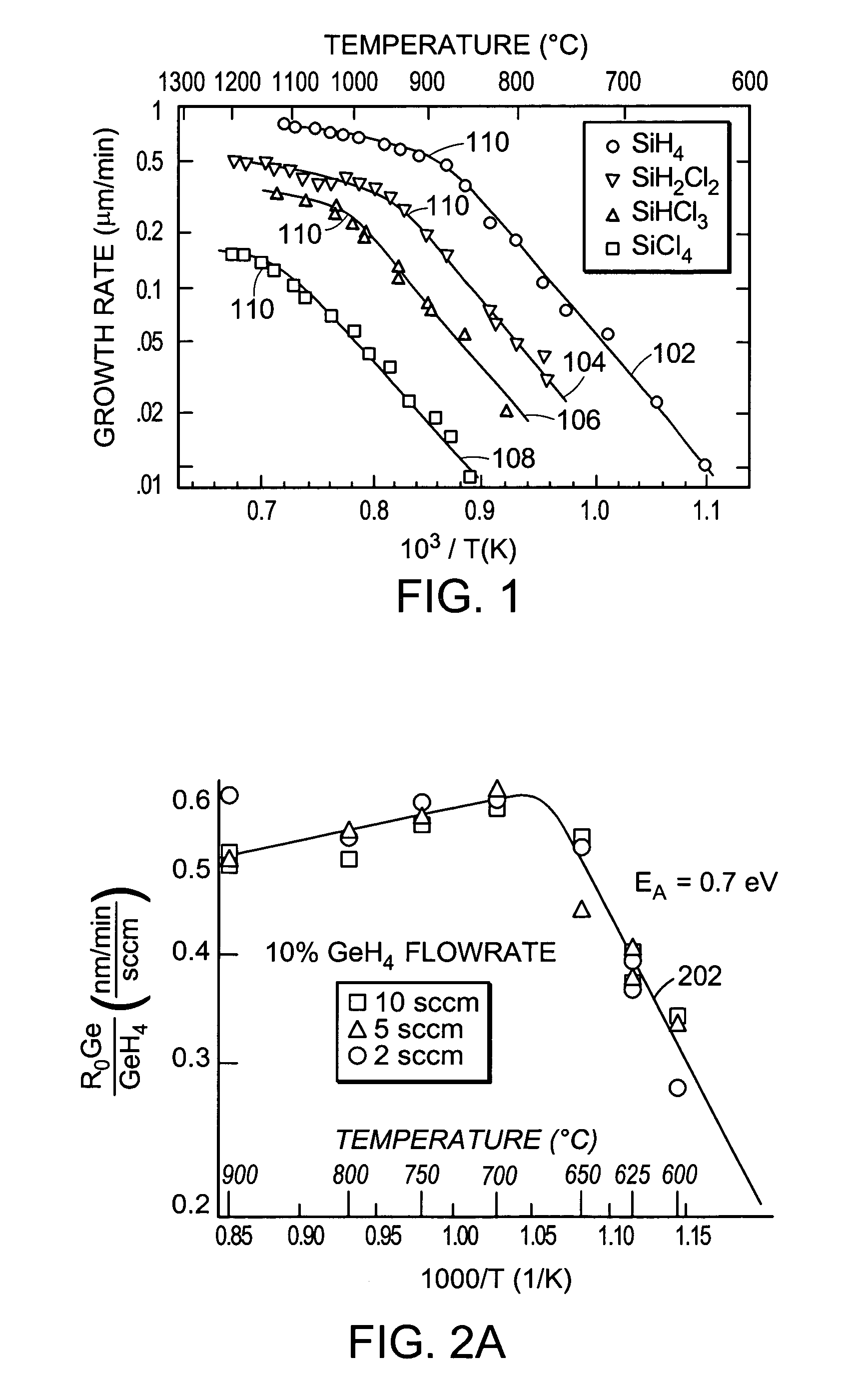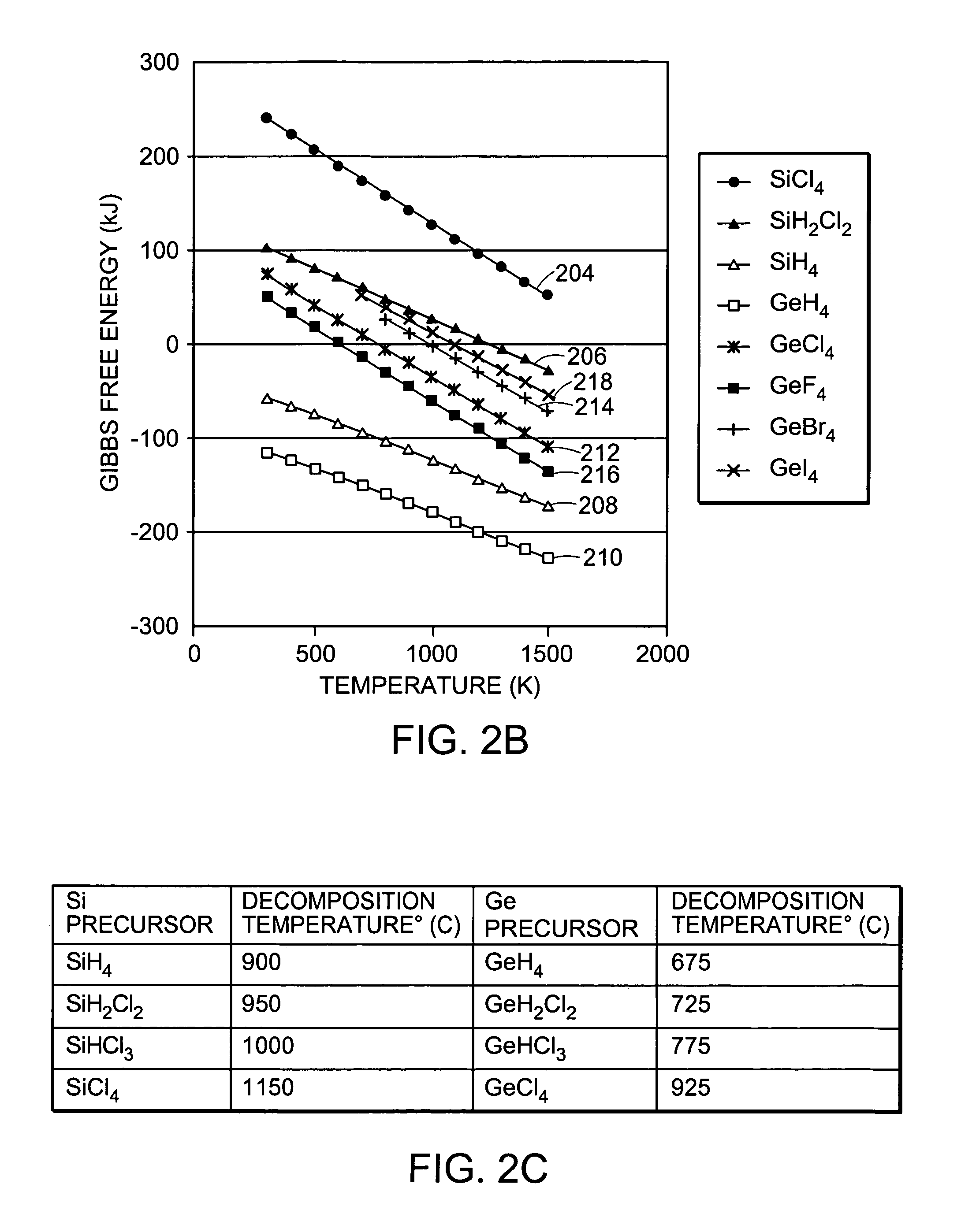Method of producing high quality relaxed silicon germanium layers
a relaxed, silicon germanium technology, applied in the direction of polycrystalline material growth, crystal growth process, chemically reactive gas, etc., can solve the problem of low defect density of relaxed sige layers, and achieve the effect of reducing the deposition on the reactor walls
- Summary
- Abstract
- Description
- Claims
- Application Information
AI Technical Summary
Benefits of technology
Problems solved by technology
Method used
Image
Examples
Embodiment Construction
[0037]FIG. 1 is a graph showing the growth rate of silicon versus temperature for various silicon precursors, SiH4 102, SiH2Cl2 104, SiHCl3 106, and SiCl4 108. Two distinct growth regimes are evident. For low temperatures, the growth rate has an exponential dependence on temperature, indicating that the growth is reaction rate or kinetically limited. For high temperatures, the growth rate has a weak dependence on temperature, indicating that the growth is mass-transport or diffusion-limited. Epitaxial layers are typically formed in the mass-transport limited-regime to minimize the effects of temperature variations during growth.
[0038]In between the two distinct growth regimes shown in FIG. 1 is a transition point 110. The temperature corresponding to the transition point for each precursor 102, 104, 106, and 108 is the decomposition temperature, or the temperature at which the precursor is nearly completely decomposed.
[0039]It is well known that as more hydrogen atoms in the SiH4 mo...
PUM
| Property | Measurement | Unit |
|---|---|---|
| Temperature | aaaaa | aaaaa |
| Temperature | aaaaa | aaaaa |
| Temperature | aaaaa | aaaaa |
Abstract
Description
Claims
Application Information
 Login to View More
Login to View More - R&D
- Intellectual Property
- Life Sciences
- Materials
- Tech Scout
- Unparalleled Data Quality
- Higher Quality Content
- 60% Fewer Hallucinations
Browse by: Latest US Patents, China's latest patents, Technical Efficacy Thesaurus, Application Domain, Technology Topic, Popular Technical Reports.
© 2025 PatSnap. All rights reserved.Legal|Privacy policy|Modern Slavery Act Transparency Statement|Sitemap|About US| Contact US: help@patsnap.com



